#alt. comix
Explore tagged Tumblr posts
Text
90: Joe Coleman // Infernal Machine
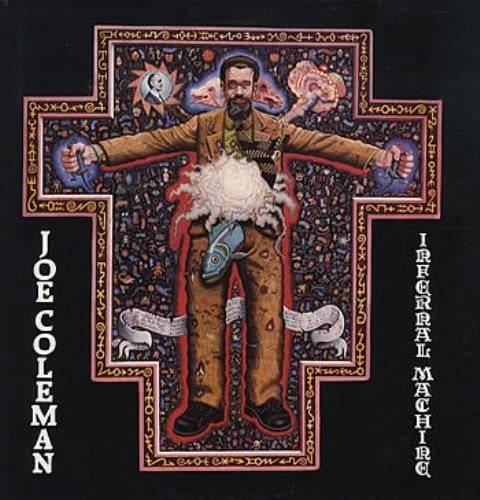
Infernal Machine Joe Coleman 1990, Blast First
Joe Coleman emerged in the late 1970s from the alternative comix scene established by artists like Art Spiegelman (Maus), Kim Deitch (Waldo the Cat), and Bill Griffith (Zippy the Pinhead), but found greater notoriety as a painter and a shock artist. Here’s Spin’s Dean Kuipers on a performance (as his character Professor Mombooze-o) that resulted in one of Coleman’s numerous arrests:
“Boston, October 22, 1989. Reel after reel of ancient hardcore porno films flash onto a black screen onstage at BF/VF—the Boston Film/Video Foundation—grey and grainy, somebody else's fucking and sucking memories of indeterminate age. After 20 minutes, the hundred people in the audience are quiet and disarmed. The lights come up.
Joe Coleman instantly comes whapping through the film screen from behind, hanging upside down from a climber's harness attached to the ceiling, screaming and choking like a man condemned. This is the man everyone came to see. Green flames and acrid smoke belch from his chest as strapped-on explosives detonate under layers of shirt, ratty duck jacket and lab coat. Half a minute later, the booming and gnarling subside and Coleman's wife, Nancy, leaps out and douses him with goats’ blood to put out the fires. She cuts him down and he tears away what's left of the black screen to reveal a dead goat hanging upside down, twisting slowly. The goat is real. The odor of spattered blood and gunpowder seeps into the stunned crowd.
'Here are Mommy and Daddy!' cries Coleman, rushing to the front of the stage and pulling two live white mice from his pockets. He sits down on the edge of the stage and holds Mommy and Daddy up to his scorched beard and talks to them. Meanwhile, Nancy pulls out her Zippo and torches a cloth/plastic effigy of Coleman. The stage is consumed by fire as Joe screams at the squirming mice, 'I'll eat the cancer out of you!' and bites the head off Daddy, spewing it back into the audience. Then he snaps Mommy's head: hers he swallows.
This is Joe Coleman's stone ritualization of his mother's death. Four days earlier, she had died of cancer.
The befuddled firemen who arrive minutes later are sure that this must be the meeting of a satanic cult. As police investigators pick through the chaos of greening humans, brown smoke and bloody carcasses, the owners of BF/VF finger Joe and Nancy, then fire manager Jeri Rossi. All three are arrested and Joe is charged with—among other things—an old Massachusetts blue law charge that hasn't been used since the 1800s: Possession of an Infernal Machine."
(You can watch an excerpt of a similar performance in the 1988 pseudo-documentary Mondo New York, though I do not recommend doing so if you’re troubled by animal cruelty.)
The Infernal Machine LP is a figurative soundtrack to the Mombooze-o character, which he retired following the Boston bloodbath. Side one (“Homage to Mass Murderers”) intersperses vintage country and blues murder ballads with exploitation film clips and interviews with murderers Ed Kemper and Charles Manson. Side two (“Infernal Machine”) is a collage of clips from TV shows and ‘40s films noir, audio from Coleman’s Mondo New York performance, and early live recordings by NYC noise punks Steel Tips.
youtube
The overall effect is eerie, and there are some powerful juxtapositions. The way the clip of Kemper’s tearful description of murdering his own mother segues into Eddie Noack’s 1968 recording of “Psycho” underscores the song’s unnerving potency; tucked between relatively jaunty tunes by Bessie Smith and Tex Ritter, a long clip of character actor Don Russell’s genuinely moving performance as a kidnapped schoolteacher begging for his life from 1963’s The Sadist (based on the Charles Starkweather murders) seems to represent man’s powerlessness in a capricious universe. Side two is bookended by excerpts from the 1947 film Nightmare Alley, in which a series of disasters reduce cocksure Stan Carlisle (played by Tyrone Power) from his position as a carnival barker to the role of a despised geek who earns a meagre living by biting the heads off chickens in front of jeering crowds. The implication is that, as Mombooze-o, Coleman himself has been similarly forced into the role of a freak by the diseased contemporary world.
The LP includes a twelve-page booklet of Coleman’s paintings and, most interestingly, a picture-disc reproduction of details from its cover image, Portrait of Professor Mombooze-o. I’m not normally much interested in picture discs, but the sight of Coleman’s zombified head spinning on the table (or the dead fish bursting from his crotch on the flip) really does complete the package. It’s as a visual artist that Coleman’s chief gifts reveal themselves. His obsessively detailed paintings, which he works out over months and sometimes years using a single horsehair brush, are the most successful transference of an alt. comix sensibility to the gallery I’ve come across. If the work in R. Crumb’s classic Weirdo anthologies could feel like a mutated, devolved descendent of the feverish iconography of sixteenth century religious art, Coleman’s paintings are that mutant culture’s return to high art.
Coleman frequently conflates people like Charles Manson with Jesus Christ, saying in a ‘90s tour of his collection of oddities that he keeps a lock of Manson’s hair and a sample of Christ’s marrow. Falling back on the Blakean idea of a marriage of heaven and hell, he claims that if the pair’s DNA could be mixed in a clone it would create a perfect Messiah. However, the mingling of deviants and prophets in Coleman’s hagiographic art does not, as Coleman seems to mystically intend, elevate the former towards divinity so much as it pulls the latter earthward. Serial killers are, almost without exception, insipid creatures, powerless to explain their own behaviour with any real insight—as are for that matter, many holy men. Maniacs and religious figures are akin in the sense that each possesses intense evocative potential. A crazed killer’s actions, which seem both primal and alien, tear at the fabric of our notion of a shared reality. It is tempting to read their murders, being as superficially inexplicable as miraculous events, as signs or portents, the killers themselves as visionaries. Put another way, both religious phenomena and psychopathic behaviour create a void of ostensible meaning that humans are agitated to fill. Meaning does not arise from their actions but is imputed to them by witnesses. In Coleman, these boring, broken men who kill find a witness capable of making them a genuinely mythic force.
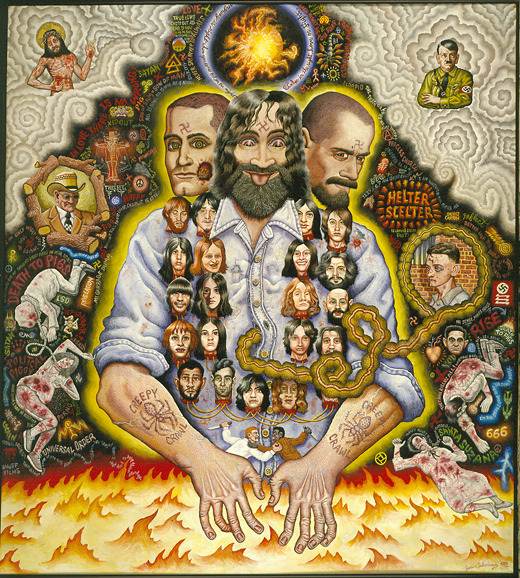
Portrait of Charles Manson, 1988 I find Coleman’s art as inspired and fascinating as I find his philosophy stunted and dull. In an interview with Richard Metzger on the BBC series Disinformation, Coleman says, with reference to mass murderer Richard Speck, “I don't want to kill anybody, but I want to express that pain. I want to express what he was trying to express. What if he didn't have to do that? And maybe, just maybe, art is a thing where you can do that.” Ten years previously, Coleman told an anecdote in Mondo New York about covering himself in blood and harassing random women at New York bars; when their boyfriends would intervene, he’d light the fuse on the hidden explosives attached to his chest and then calmly walk out of the bar in the confusion, enjoying the screams and smoke. Whether he’s spinning a yarn or recounting something he actually did, it’s clear he gets the same petty thrill out of terrifying strangers as the sickos (both real and fictional) excerpted on the Infernal Machine LP do. This doesn’t make him a monster, but it does clarify that when he talks about “expressing” their pain he also wants his share of their freedom to do violence. Of all the reasons it’s good for Coleman that he ended up an artist instead of a cut-rate David Berkowitz, the most telling is this: if he had, what artist of his quality would’ve wanted to take him as their subject?
90/365
#joe coleman#vinyl record#music review#picture disc#serial killers#charles starkweather#charles manson#manson family#richard speck#richard metzger#nightmare alley#alt. comix#comix#weirdo#mondo#'80s music#'50s music#'40s music#'60s music#'70s music
4 notes
·
View notes
Text

Tikkun Olam
I first drew this about a month ago, and I have so many more thoughts and feelings and anger and sadness swirling around since then. But I'll start here.
269 notes
·
View notes
Text
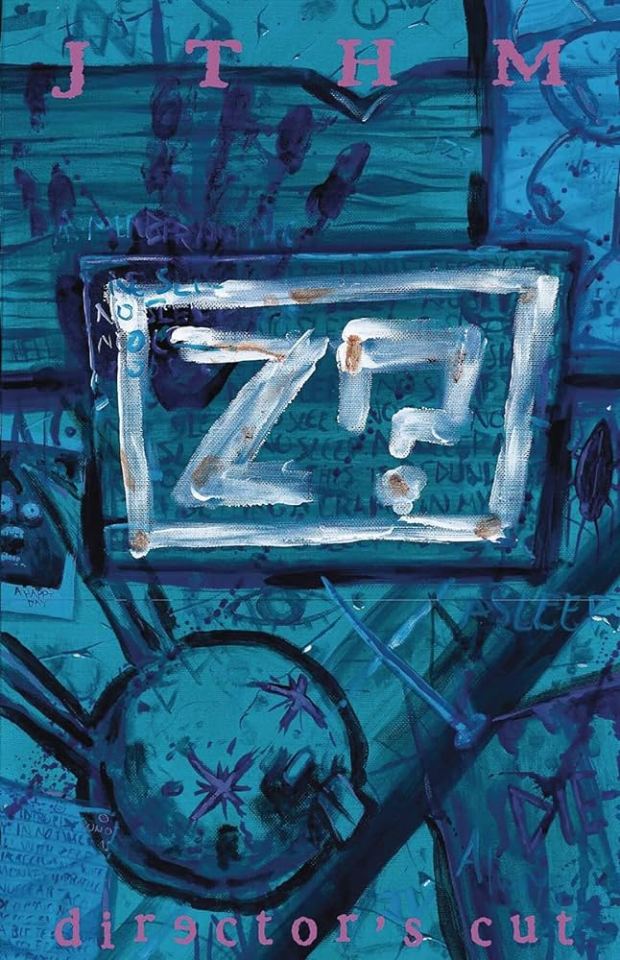
Johnny the Homicidal Maniac attempts to walk a fine line between satirizing revenge fantasies and indulging in them, but this duality often leaves the book feeling muddled. Vasquez introduces us to Johnny, the titular homicidal maniac, as a socially alienated, self-pitying character whose violent outbursts are triggered by trivial slights or perceived offenses. His victims are exaggeratedly vile, unrepentant individuals, seemingly crafted to evoke a sense of dark catharsis. Yet this makes it difficult to discern if Vasquez is critiquing Johnny’s outlook or, rather, inviting us to revel in the violence he enacts. The satire is further muddied by the fact that Johnny’s perspective and violent tirades aren’t challenged or balanced by the narrative; instead, they risk validating his nihilism.
Although Johnny briefly expresses disgust at a rapist’s crime and hints at awareness of his own monstrous nature, his moments of reflection come across as self-pity rather than genuine remorse. These half-hearted attempts at self-awareness fall short, making it difficult to sympathize with him. In other stories about morally flawed or self-deluded protagonists—like Taxi Driver’s Travis Bickle or American Psycho’s Patrick Bateman—there are layers to the characters’ actions and motivations, often tied to social or psychological commentary. For instance, Bickle’s flawed quest to "save" Iris is revealed as self-serving, and Bateman’s violent fantasies serve as outlets for his existential torment. In contrast, Johnny’s killing spree feels more like a visceral but empty reaction to everyday irritations, lacking depth or nuance.
Vasquez seems at least somewhat aware of the protagonist’s lack of appeal and attempts to inject self-parody through liner notes that poke fun at Johnny's self-aggrandizing tendencies. However, the satire is undermined when even supposedly sympathetic characters, like Devi (Johnny's ex-girlfriend) or Tess (a victim Johnny encounters), display the same arrogant contempt for others that Johnny does. Lines like Devi's, “I think it’s so sad when monkeys don’t know that they are the simple ones,” reveal a similar smug superiority. Tess, who is rescued from certain death by a stereotypical “jock” character, Krik, offers nothing but disdain for him, even as he risks his life to save her. Rather than fostering complexity, these characters’ shallow hostility only reinforces the comic’s bleak view of humanity, failing to provide any contrasting perspectives or empathy that might deepen the satire.
Visually, the art style leans on exaggerated grotesque imagery reminiscent of Ren and Stimpy with a dash of H.R. Giger, but lacks the craft of either. Characters are often drawn as claw-handed semi-stick figures, and the over-the-top grotesqueness feels like a cover for weak composition and inconsistent line work. This style occasionally suits the manic tone of the book but detracts from the visual storytelling, making it hard to take the violence or characters seriously.
Despite these issues, there are moments in Johnny the Homicidal Maniac that hint at an intriguing horror premise: Johnny, as a former artist whose creativity has been drained by a supernatural force, killing in a desperate attempt to regain inspiration. This concept, if further explored, might have lent more depth to Johnny’s motivations, creating a compelling horror story about the consequences of lost artistry and self-destruction.
Additionally, Vasquez shines in the one-page newspaper-style strips, where the comic’s dark humor and over-the-top violence are distilled into short, self-contained gags. These segments play to Vasquez’s strengths in absurdist humor and quick punchlines, making it clear that Johnny’s rants are overreactions to trivialities, rather than statements on society.
Ultimately, Johnny the Homicidal Maniac struggles to reconcile its satire of revenge fantasies with its indulgence in them. The comic has moments of humor and originality, especially in its shorter gag strips, but as a whole, it lacks the coherence and character complexity necessary to deliver a satisfying satire. Vasquez may have created a more engaging experience if he had leaned fully into a twisted comic strip format, focusing on humor over inconsistent attempts at social commentary.
#johnny the homicidal maniac#jthm nny#jthm johnny#jthm fandom#jthm#johnny c#nny#squee#jhonen vasquez#alternative#alternative comics#goth#alt aesthetic#alt art#comics#indie comix#indie comics#underground comix#underground#horror comics#90s commercials#90s comics#comic review#book review#review#comic books#black and white#black and white comics#invader zim
39 notes
·
View notes
Text





Sort of manga for the 20th year anniversary of the magazine belonging to the team behind Otaku festival, soon to be published. One of the oldest trees, in the Romanian capital city, almost burned down around 4 years ago, leaving behind a hollow inside. Ever since the incident, a piece of metal is strapped to its side, turning it into an occasional refuge for the homeless. This is the roughly translated version, the printed one is in Romanian.

The alt manga is about the spirit of a world living on the outskirts, almost forgotten by the hijacked revolution's aftermath. To look forward, this homeless grandfather keeps in mind the words of Lena Constante as well as the old-survivor-tree's lessons of life.
☯︎ This December marks 35 years since the Revolution of 1989, back when Ceaușescu's dictatorship ended. Nationalism, coupled with nostalgia for the by-gone Communist era, alongside homophobe outbursts and pro-extreme right Legionari fanatics have bombarded our everyday scrollable realities and, according to some, almost lead to a second Mineriad. Meanwhile, the presidential elections've been rescheduled for spring 2025.
♗♤🃟Gonna end this post and the year with a reminder to support causes such as the Innitiative Group defending the I.O.R. Park and independent journalists such as the guys at Snoop, tracing the tangled web behind our chaotic Romanian political life.
#trees#tree#old trees#survivor series#ecology#ecosystem#bucharest#botanical garden#natural history#ancestry#comix#comics#romania#grandparents#black and white#biodiversity#biodiversidad#comicstrip#indigineous people#revolution#december 1989#escher#raster#dambovita#by the river#alt manga#shōjo manga#shojo manga#shoujo
34 notes
·
View notes
Text
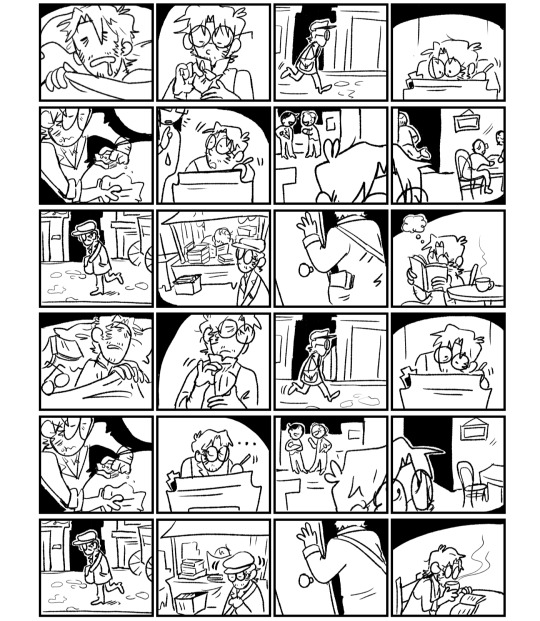

before luzhin's arrival to st petersburg
#crime and punishment#cnp#comics#andrei semyonovich lebezyatnikov#id in alt#making this cured my ails in the time i was drawing it.... making art and comix is so fun and beautiful 🕊
69 notes
·
View notes
Text

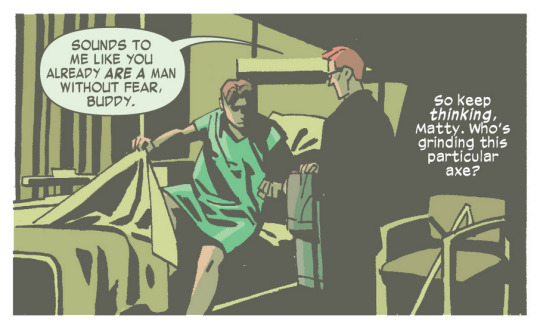
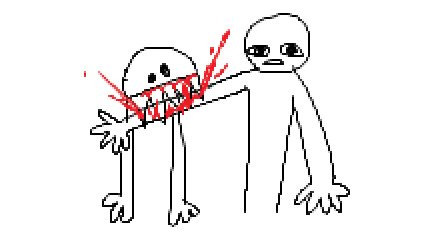
482 notes
·
View notes
Text
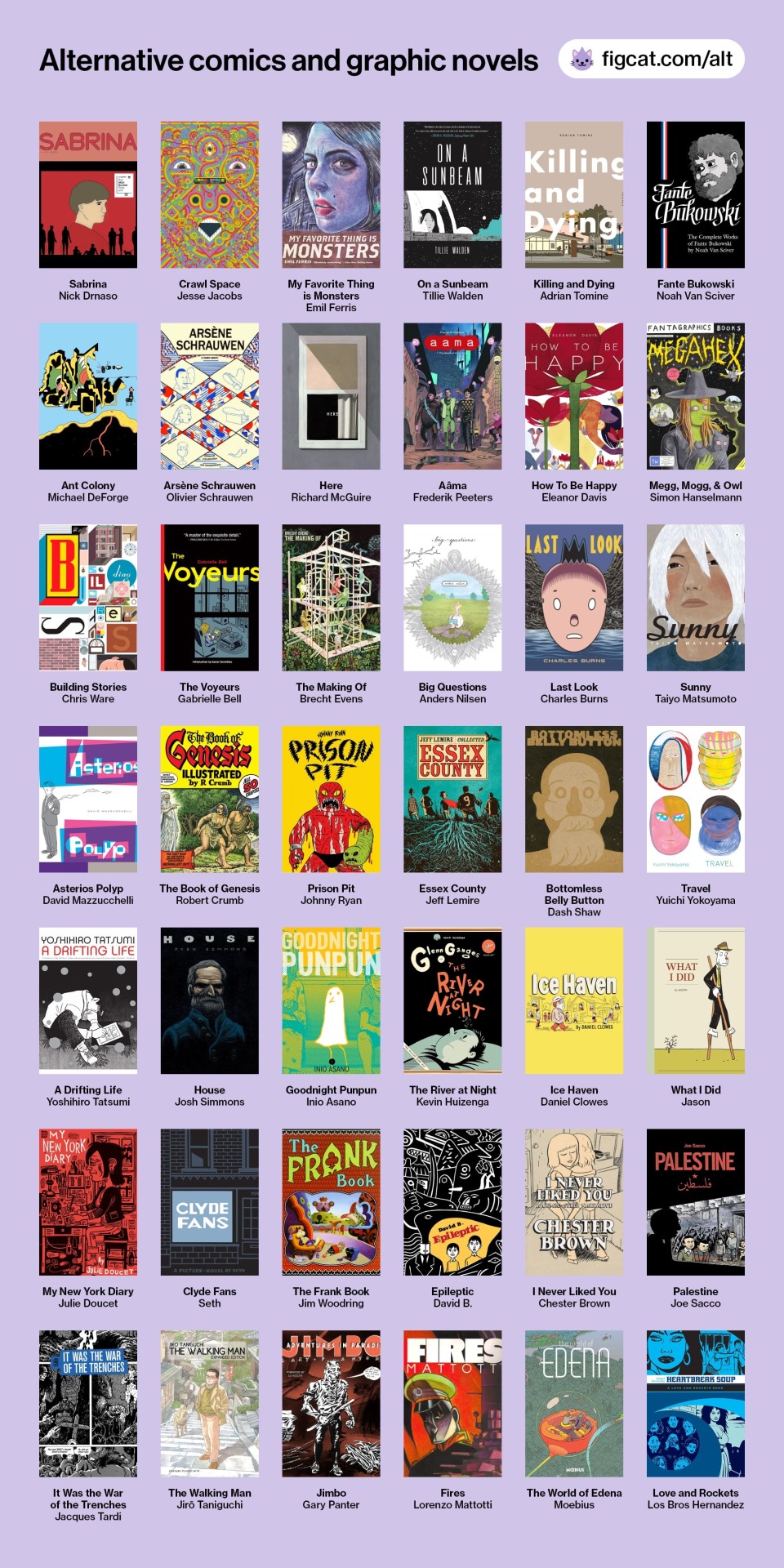
Alternative comics and literary graphic novels chart
This chart is a selection from my list of 200 alternative, art, and experimental comic books, as well as graphic novels with a literary bent. I arranged the chart in reverse order of publication to highlight the more recent titles; I also excluded some of the obvious big-name classics to make it somewhat more interesting than your standard "comic books aren't just for kids starter pack".
#comics recs#comic recommendations#graphic novels#alt comics#alternative comics#fantagraphics books#drawn and quarterly#indie comics#independent comics#alt comix
57 notes
·
View notes
Text

Hi, we're the Wiggle Bird Mailing Club!
The WBMC is a T4T micropress! We are a Patreon-based project that physically publishes a new zine every month from trans & queer authors and mails them to you! We specialize in comix and art zines, but each month features a new author so it's always a little different!
Check us out: Patreon.com/poolparty666 It's just $6/mo to join our monthly zine mailing list!

Since 2018 we've been dedicated to paying and promoting self published work by trans authors! Not all the zines we publish have mature content, but many do so we are an 18+ club. We celebrate freaks, perverts, and weirdos!
#zine#alt comics#comic#trans#diy#art#gay#queer#furry#wbmc#self publication#zine club#t4t#transgender#weird art#weird zines#trans zines#comix#underground comix#comic art#lesbian#sapphic#pride
124 notes
·
View notes
Text





My first ever Zine.
(Printable files available on my Patreon for a dollar)
#simon says#my art#art#zine#art zine#comix#indie comix#comics#had a lot of misprints to get to this point#the first 3 prints cut out the part where my printer is from a dumpster and that can't be left out#also yes this is captioned it has alt ids
20 notes
·
View notes
Text




Tortuga Helps Garfield
Starring Tortuga, the tortoise who helps, and Garfield, from the paper.
#comics#comic#my comics#my-comics#indie comics#alt comix#indie comix#alt comics#ink#garfield#dilbert
8 notes
·
View notes
Text
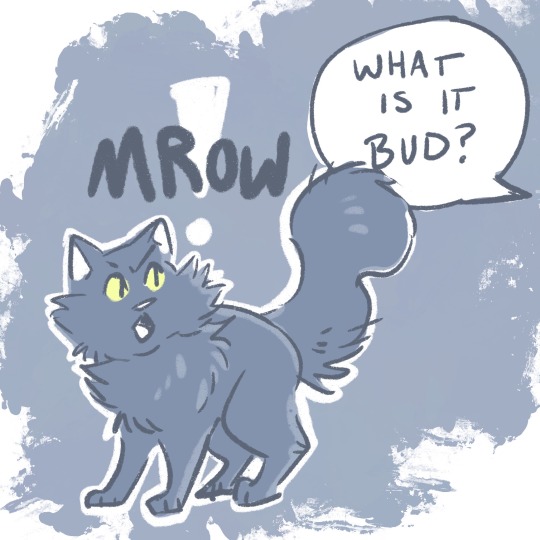
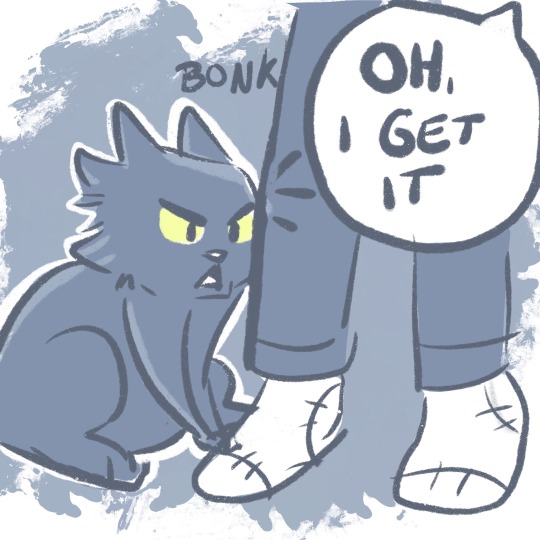

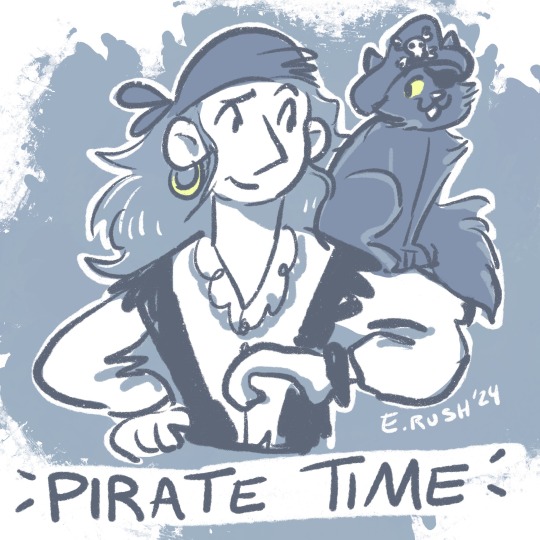
My cat insists on doing this every day.
#artists on tumblr#illustration#digital art#alt comix#autobio comics#diary comic#original comic#web comic#cat comic#cat art#cats#black cats
30 notes
·
View notes
Text

from Alienation by Inés Estrada
#comics#illustration#portrait#art#alt comics#alt comix#alienation#fantagraphics#punk art#woc artists#ines estrada#inuit#alaska#husky#dog
38 notes
·
View notes
Text



Just put some block-printed shirts and patches in my store! (These are not all of them). Got t-boy swag?
Not too many shirts rn, but I'm hoping to do a Savers run soon to get some more! More patches coming soon for sure tho.
13 notes
·
View notes
Text

Baby Talk: A Tale of 3 4 Miscarriages
from Twisted Sisters Comics No. 4
by Diane Noomin
#comics#comic books#art#illustration#panelswithoutpeople#b&w#black and white#alt comics#alt comix#Baby talk#Twisted Sisters Comics#Kitchen Sink Press#Diane Noomin#baby#fetus#lobster
3 notes
·
View notes
Text
Another one of my sticky note comics I thought Tumblr might like! Same @ on Instagram if you want more regular posts, I will try to crosspost them all but I am bested by light admin










#id in alt text#my art#post it art#sticky notes#autobio comics#transgender#transmasc#nonbinary#original comic#comix
6 notes
·
View notes
Text


portrait of the lovely woman.
#vintage#original character#original art#oc#nostalgia#traditional sketch#artists on tumblr#digital art#vintage art#portrait#splatter platter comic#pop art#comic art#comics#60s#70s#my art#alt comix#underground comix
38 notes
·
View notes